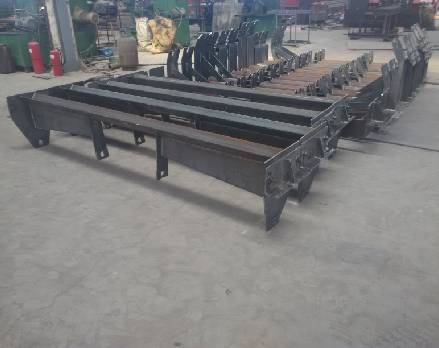 Afrikaans
Afrikaans  Albanian
Albanian  Amharic
Amharic  Arabic
Arabic  Armenian
Armenian  Azerbaijani
Azerbaijani  Basque
Basque  Belarusian
Belarusian  Bengali
Bengali  Bosnian
Bosnian  Bulgarian
Bulgarian  Catalan
Catalan  Cebuano
Cebuano  Corsican
Corsican  Croatian
Croatian  Czech
Czech  Danish
Danish  Dutch
Dutch  English
English  Esperanto
Esperanto  Estonian
Estonian  Finnish
Finnish  French
French  Frisian
Frisian  Galician
Galician  Georgian
Georgian  German
German  Greek
Greek  Gujarati
Gujarati  Haitian Creole
Haitian Creole  hausa
hausa  hawaiian
hawaiian  Hebrew
Hebrew  Hindi
Hindi  Miao
Miao  Hungarian
Hungarian  Icelandic
Icelandic  igbo
igbo  Indonesian
Indonesian  irish
irish  Italian
Italian  Japanese
Japanese  Javanese
Javanese  Kannada
Kannada  kazakh
kazakh  Khmer
Khmer  Rwandese
Rwandese  Korean
Korean  Kurdish
Kurdish  Kyrgyz
Kyrgyz  Lao
Lao  Latin
Latin  Latvian
Latvian  Lithuanian
Lithuanian  Luxembourgish
Luxembourgish  Macedonian
Macedonian  Malgashi
Malgashi  Malay
Malay  Malayalam
Malayalam  Maltese
Maltese  Maori
Maori  Marathi
Marathi  Mongolian
Mongolian  Myanmar
Myanmar  Nepali
Nepali  Norwegian
Norwegian  Norwegian
Norwegian  Occitan
Occitan  Pashto
Pashto  Persian
Persian  Polish
Polish  Portuguese
Portuguese  Punjabi
Punjabi  Romanian
Romanian  Russian
Russian  Samoan
Samoan  Scottish Gaelic
Scottish Gaelic  Serbian
Serbian  Sesotho
Sesotho  Shona
Shona  Sindhi
Sindhi  Sinhala
Sinhala  Slovak
Slovak  Slovenian
Slovenian  Somali
Somali  Spanish
Spanish  Sundanese
Sundanese  Swahili
Swahili  Swedish
Swedish  Tagalog
Tagalog  Tajik
Tajik  Tamil
Tamil  Tatar
Tatar  Telugu
Telugu  Thai
Thai  Turkish
Turkish  Turkmen
Turkmen  Ukrainian
Ukrainian  Urdu
Urdu  Uighur
Uighur  Uzbek
Uzbek  Vietnamese
Vietnamese  Welsh
Welsh  Bantu
Bantu  Yiddish
Yiddish  Yoruba
Yoruba  Zulu
Zulu Innovative Solutions for Optimizing Conveyor System Components and Enhancing Operational Efficiency
Understanding Conveyor Components The Backbone of Modern Material Handling
Conveyor systems are an indispensable part of many industries, from manufacturing and distribution to food processing and pharmaceuticals. At the heart of these systems are conveyor components, the vital elements that ensure smooth, efficient, and reliable material transportation. Understanding these components is crucial for anyone involved in system design, operation, or maintenance.
1. Types of Conveyor Components
The primary conveyor components include belts, rollers, pulleys, motors, and control systems. Each of these plays a specific role in the overall functioning of the conveyor system.
- Conveyor Belts Often made from various materials such as rubber, fabric, or metal, belts are the primary surface that moves materials from one point to another. The choice of belt material depends on the type of materials being transported and the environmental conditions, such as temperature and humidity.
- Rollers These cylindrical components support the conveyor belt and help facilitate movement. They come in different types—idlers, driven, and return rollers—all designed to reduce friction and wear, enhance belt longevity, and improve efficiency.
- Pulleys Pulleys are used at the ends of the conveyor system to maintain tension on the belt and can be either drive or return pulleys. The drive pulley is powered by the motor, while the return pulley helps guide the belt back to its starting point, completing the loop.
- Motors and Drives The motor is the heart of the conveyor, providing the necessary power to move the belt and its load. Various types of motors are used, including AC and DC motors, each with unique advantages. The motor is typically matched with a drive system, which may involve gears and chains to optimize power transmission.
- Control Systems Modern conveyor systems often integrate advanced control systems that utilize sensors and programmable logic controllers (PLCs) to monitor performance, adjust speed, and detect faults. This automation not only improves efficiency but also enhances safety by minimizing human intervention.
conveyor component

2. Importance of Conveyor Components
The significance of conveyor components cannot be overstated. They directly impact the productivity and efficiency of logistical operations. For instance, a well-designed belt can minimize downtime and reduce the risk of product damage, while efficient rollers can lower energy consumption and increase the lifespan of the system.
Moreover, the maintenance of these components is crucial. Regular inspection and timely replacement of worn parts can prevent unexpected breakdowns and costly production delays. Proper training for personnel who operate and maintain conveyor systems is essential to ensure that they understand how each component functions and how to troubleshoot issues.
3. Future Trends in Conveyor Technology
As industries continue to evolve, so do conveyor components. Innovations in materials science are leading to the development of more durable belts and rollers, which can withstand harsher environmental conditions and demanding workloads. Additionally, the rise of automation and robotic systems is pushing conveyor technology to incorporate smart features, such as IoT-enabled sensors that provide real-time data on performance metrics.
Sustainability is also becoming a focal point in conveyor design. Manufacturers are exploring eco-friendly materials and energy-efficient motors to reduce the carbon footprint of their operations.
Conclusion
In conclusion, conveyor components are the unsung heroes of modern material handling systems. Their design, maintenance, and evolution are critical to the performance and efficiency of manufacturing and distribution operations. Understanding the intricacies of these components not only aids in the effective management of conveyor systems but also prepares industries for the future of automated and sustainable operations. As technology continues to advance, so will the capabilities of conveyor systems, ensuring they remain a vital component of industrial processes for years to come.
-
Revolutionizing Conveyor Reliability with Advanced Rubber Lagging PulleysNewsJul.22,2025
-
Powering Precision and Durability with Expert Manufacturers of Conveyor ComponentsNewsJul.22,2025
-
Optimizing Conveyor Systems with Advanced Conveyor AccessoriesNewsJul.22,2025
-
Maximize Conveyor Efficiency with Quality Conveyor Idler PulleysNewsJul.22,2025
-
Future-Proof Your Conveyor System with High-Performance Polyurethane RollerNewsJul.22,2025
-
Driving Efficiency Forward with Quality Idlers and RollersNewsJul.22,2025





























